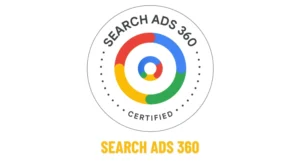Why businesses should scrape social media for data
By TOI Staff
February 23, 2024
Update on : February 23, 2024

Companies are all over social media these days. Communicating with customers, marketing out their products or services, and crafting their brand identity. Yet, there’s always something more beneath the surface.
In fact, social media is brimming with data. It’s where you understand what potential customers think of you, see how you stack up against the competition, or check what the potential employee is interested in.
But how do you harness all that data, especially when there’s just so much of it? There is web scraping. What’s social media scraping, and how can it help your business? Let’s figure this out.
What is the meaning of scraping of social media?
Data harvesting, another word for scraping, is an automated method of pulling vast quantities of information from websites. Thanks to automation, this process doesn’t require manual effort. Instead, specialized bots do the job. They go through website code to pinpoint and extract specific data points. These bots then clean the data and present it in an easy-to-digest format.
What does scraping do across social media?
The principle is the same. You program a scraper to navigate social media pages and then bring the requested data. For example, you want to collect public contact information from profiles for lead generation purposes for your SEO company. Here is what the web scraping flow will look like (simplified):
- Define the type of businesses or professionals you want to target. You’re interested in small to medium-sized enterprises (SMEs) in the tech industry. You focus on LinkedIn because that’s the best place to collect business information.
- You’ll need a web scraping tool to navigate LinkedIn, identify the profiles that match your criteria, and extract the relevant data. Because of the complexity of the LinkedIn platform, the tool should be able to support JavaScript rendering (for loading dynamic content), proxy management (for rotating IP addresses to avoid IP bans), and automated login capabilities.
- Specify the industries or sectors you’re targeting. In our case, these are tech companies. Then, define the job titles and geographical locations of the professionals you want to target. Then, program your crawlers to navigate through LinkedIn to spot profiles that match these criteria. Configure your scraper to extract specific pieces of public contact information (full name, email addresses, phone numbers, or website URLs).
- Before launching a full-scale scraping operation, conduct test runs to ensure your configuration works as intended and that the data is being accurately extracted and structured.
- Regularly check the performance of your scraping setup. LinkedIn’s website structure may change, so you’ll need to adjust your crawler and scraper configurations.
What data can you collect while scraping social media?
Based on research conducted by Skynova, 64% of companies engage in gathering customer data from social media platforms. The primary sources for this data collection include Facebook (72%), Instagram (59%), Twitter (48%), and LinkedIn (29%). The study also highlights the most commonly collected types of data:

Social media scraping is not limited to gathering customer data only. You can also extract information from multiple social media platforms on your direct or indirect competitors. You may want to look at:
- Text of publications
- Visual content
- Hashtags
- Engagement
- Followers
Why scrape social media for data?
Based on Skynova research, businesses mainly use social media data to improve products/services, find new leads, and maintain current customers. But there are other reasons to invest in collecting data automatically.

Improve your offerings
To make your product the best in the market, you need to know what your customers like about it, what they don’t like, and what kind of new options they wish for.
So, web scraping allows you to run through comments, reviews, and posts with mentions of your or competitors’ brands at scale so you can find out what customers love and what they’re not too happy about. This will help you tweak your products or services to match customer expectations better.
Moreover, through social media conversations, you might discover a need or desire that hasn’t been met yet. This can inspire you to create new products or services that fill that gap.
Boost lead generation
Regardless of what you’re selling or who you’re selling to, both consumer-focused (B2C) and business-focused (B2B) companies can reap significant rewards from data obtained through social media scraping to enhance their lead generation strategies. Here’s the reason why:
- You can pinpoint individuals and organizations showing interest in your solution or the particular challenges your product addresses.
- Gain an understanding of whom your rivals are targeting and the tactics they use to interact with their followers.
- Acquire detailed insights into the likes and behaviors of prospective leads, which allows you to tailor your products or services more effectively to boost the chances of making a sale.
- Social media crawling enables you to collect a large volume of lead information swiftly and on a grand scale.
Optimize operations
Web scraping social media makes data harvesting faster, cheaper, and smarter for businesses.
Manual data collection is prone to mistakes. You might paste data into the wrong cell. Or accidentally leave something out. This never happens when the computer takes over this job. In fact, web scraping ensures 99% data accuracy.
Now, think about how long it would take to navigate multiple social media platforms, search for the required data, and then copy-paste it into the file. A web scraper collects data way faster than a human could, so it speeds up the whole process.
Copying down data by hand takes a lot of time. And if you’re paying someone to do it, that’s going to cost you. Since web scraping is much quicker, it means you don’t have to spend as much on paying people for their time.
Finally, you get more data for analysis. In fact, you can fetch as much data as you want—200% more or 800% more compared to your old way of doing things. This will allow you to make better decisions, find out new things, or reach more leads.
Background screening
You’re about to invite someone to join your team, rent out your apartment, admit a student into your college, or decide on a new business partner. You’d want to know more about them, right? Just like when you scroll through someone’s social media to get a sense of what they’re like, companies do something similar by scraping social media. They do this to understand a person’s behavior, interests, and whether they’ve been honest about their background.
Background check companies usually web scrape social media to spot any red flags, which may be related to:
- Sharing or posting rude and biased content.
- Signs of unlawful activities or misuse of substances.
- Differences between what’s listed on a person’s resume and what their social media accounts reveal.
Conclusion
The idea of manually compiling a vast amount of data is, frankly, overwhelming. Imagine going through every single follower of a Twitter account individually, and then entering that data into a spreadsheet. That’s an unappealing task for the majority. That’s labor-intensive and inefficient.
Scraping social media for data is an incredibly efficient method for gathering information in large volumes. This method opens up vast opportunities for sales experts, marketers, recruiters, and researchers. It allows finding potential clients, performing background screenings, or gathering insights for developing new products.















